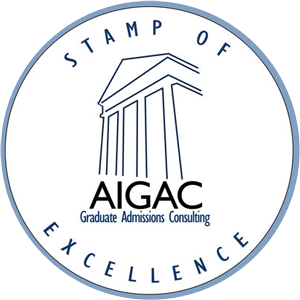The Johns Hopkins SAIS website gives detailed instructions for completing the application so make sure to read through it thoroughly. We’ll go through a few of those in a moment. Before we start, the most important thing you MUST do is start your application early. Don’t get stuck at the last minute with only a few days to complete the application. If you know you’re going to apply to SAIS, start the online application as early as possible. This gives you time to locate test scores or transcripts, to refine the elements the application calls for (like your resume), and retake exams if you have low scores. For full application instructions go to: https://www.sais-jhu.edu/sites/default /files/AppInstructions2016.pdf. Here I list a few of the more complex instructions you may want to think through earlier than the more obvious ones:
“Intended Area of Study: Please select your first and second choices from an International Policy Area or Region of the World. Applicants selecting concentrations requiring proficiency in one of the Asian language, which are not offered at SAIS Europe, must obtain permission from the Asia Studies program to attend SAIS Europe.”
You’ll want to make a decision early on about your first and second choices, because this will influence what you talk about when you do your campus visit (which you should do!), how you write your essays and how you prepare for your interview. This decision might be easy for you, but it also could be something that requires a lot more research and talking to professors and alumni, so you want to start thinking about this early. Of course if you’re planning to attend SAIS Europe, pay attention to the note above about Asian languages.
“Educational Background: Please list all university-level work, including study abroad and transfer course work, at which four or more courses were completed. Please list the university that granted your undergraduate degree (B.A., B.S., Diploma, Licen.) first. Applicants are not required to list institutions at which three or fewer courses were completed, or where courses were only audited or taken on a non-credit basis. Applicants should not list executive education programs, non-credit language institutes or non- credit certificate programs.”
This section is one that could take you more time than you expect if you have attended multiple programs. You might be like me where I took semester and summer programs at various universities over the years.
“Test Scores: Please list your official scores for the GRE and/or GMAT, and if required, your official English competency exam scores. If you have completed an exam more than once, please list your most recent scores.”
Make sure you have this information on hand. And find out what the current minimum requirements are for GRE/GMAT scores for SAIS (a great question to ask admissions officers when you do your campus visit). If you don’t have a score in the range of what SAIS is looking for, it’s worth retaking the test(s).
“Work Experience: Please provide details of your three most recent professional positions.”
This part should be easy, especially if you’ve already worked on your resume. Another great reason to have your resume/CV streamlined well in advance of the application deadline.
“Time Spent Abroad: Applicants should use this section to indicate any time spent living, working and/or studying outside of their home country. Please list the most significant experience abroad first.”
This may be simple for you or again, if you’re like me, it might take a lot of time remembering all the experiences you’ve had that you want to list. SAIS will value experience abroad so don’t short-change yourself because you forgot to include a short-term project you worked on a few years ago.
“Economics Background: Before starting their studies at Johns Hopkins SAIS, candidates for the MA must have earned the equivalent of a B- or higher in separate college-level courses in introductory microeconomics and in introductory macroeconomics. A single, semester-long college level course in introductory economics covering both micro and macro will be considered minimally sufficient.
Courses not taken for a grade do not fulfill the economics prerequisite. Applicants who have taken economics courses that are not entitled “Intro/Principles of Microeconomics” or “Intro/Principles of Macroeconomics” but who believe their coursework to be equivalent should include detailed course descriptions and/or syllabi with their official transcripts.
Admitted candidates who have not satisfied the basic economics requirements can fulfill them during the summer before matriculation. Johns Hopkins SAIS offers an online course in basic microeconomics and macroeconomics to enable these candidates to meet the requirement. If an admitted candidate fails to meet the requirement before the start of regular classes, they cannot matriculate.
Economics coursework and grades listed in the application must be reflected on transcripts. If economics course work will be completed between the time of application and enrollment at Johns Hopkins SAIS, transcripts must be submitted as soon as the courses are completed and before an applicant’s first semester.
Please indicate the economics courses taken, first in the theory area, then the quantitative area, and then field courses. Please either check the appropriate box or provide the course name, year the course was taken (as it appears on the transcript) and the grade received. If a course was taken as a high school Advance Placement (AP) course, and college credit was received, please indicate by checking the AP credit question.
Only list courses for which you received a grade of B- or better; do not list courses not taken for a grade.”
This one is very important and the tell is the amount of detail in the instruction. If you haven’t taken the required economics courses (with a B- or better!) you made decide to sign up today. Even for other graduate programs that do not require this, you’ll have a higher chance of being admitted if you can show you’ve passed an econ course with a decent grade. Econ courses in international affairs/public policy programs are notoriously challenging for many students. Note while SAIS indicates you can be accepted without having met the requirement, this means you need to take the course over the summer, so it means planning ahead to make sure that’s feasible. You also must pass or you can’t enter the program even if you’ve been admitted, so if you’re nervous about your econ ability (or just plain math skills, which may be rusty) I strongly recommend taking a course before applying.
“Essay Section: Candidates are asked to upload the relevant required essays for their program of interest.”
This is where you submit your essays, so you can’t actually complete the online application without completing your essays. This is a reminder to get started on those essays!
“Financial Aid: Applicants eligible for aid should indicate in this section if they wish to apply for Johns Hopkins SAIS fellowships/grants and also complete and submit relevant financial aid forms.”
Applying for fellowships and grants? For many applicants, getting a grant or fellowship means the difference between years of debt… or not. Or it means being able to take advantage of acceptance to a program. Do your homework and start getting together the “relevant financial aid forms.” I said it before and I’ll say it again, do not leave this part of the application until the last minute. Never underestimate how long it may take you and it’s an awful feeling to be completing it at 11:55pm with a midnight deadline and realize you’re missing critical information. If you want to give yourself an easy advantage: start early. Go through everything on the checklist. Set a deadline of at least a week before the official deadline to have you application totally done, so it’s either submitted early or you have plenty of time to locate missing information in that last week before the deadline. Bye for now!



Magnifico articulo me ha sido de mucha utilidad. Gracias!! Muchas Gracias!!